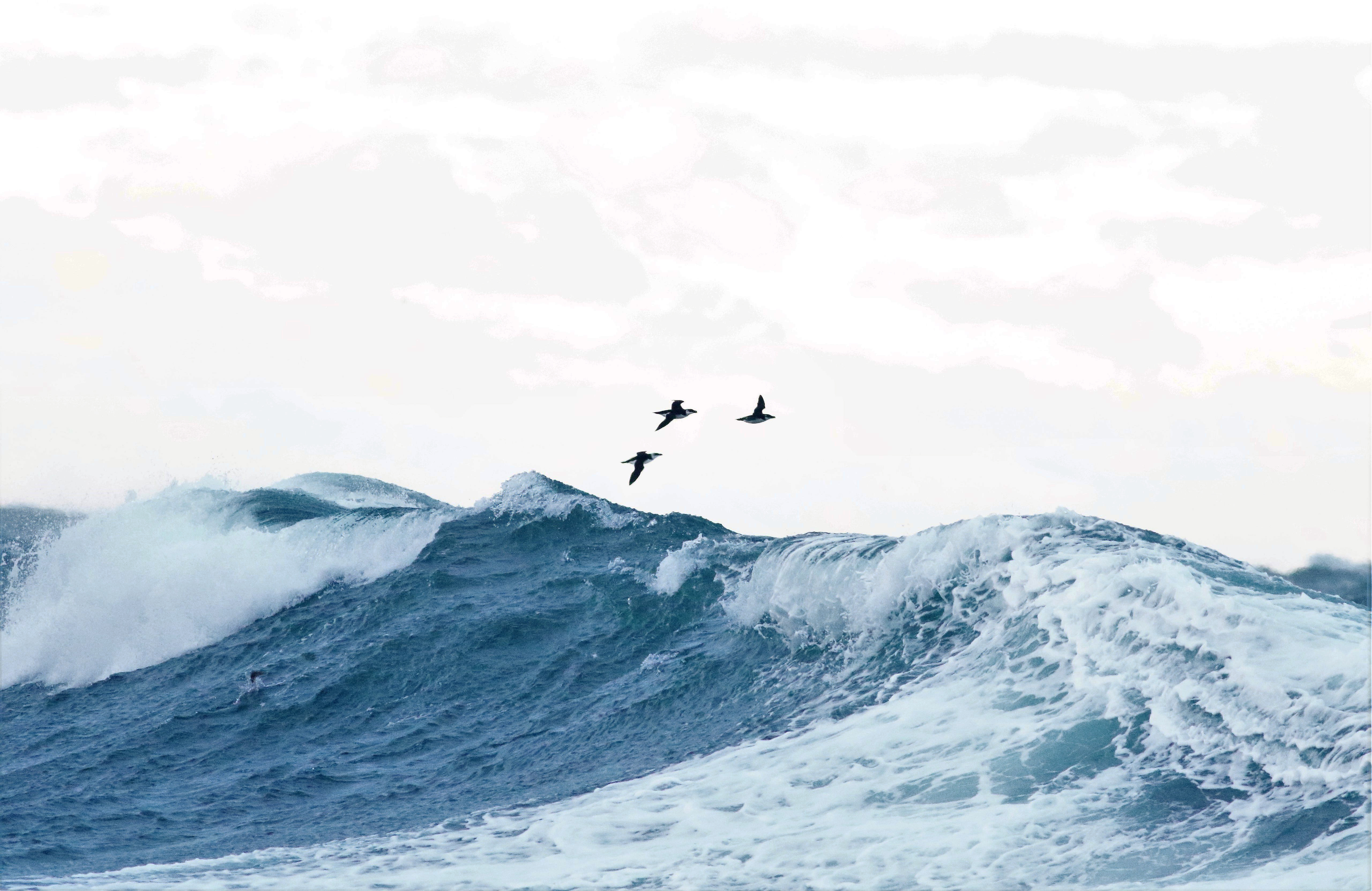
Water movement around and over Stellwagen Bank is influenced by the Gulf of Maine's large-scale, counter-clockwise circulation pattern, known as the Maine Coastal Current. This current flows south at 2-6 inches per second (5-15 centimeters/second) along the Maine and New Hampshire shoreline. A weak branch (1-2 inches/second or 2-5 centimeters/second) occurs near Cape Ann, Massachusetts. The stronger current flows southward over Stellwagen Bank and east of Cape Cod.
Strong tidal currents are driven by a tidal range of approximately three meters (nine feet). The tidal flow up the slopes of the bank, in conjunction with the shallow depth, generates turbulence that mixes nutrient rich water into the surface layer in a process called upwelling.
Other factors affecting water movement include the shape of the surrounding land and the seafloor bathymetry, localized wind speeds and patterns, seasonal density of water layers due to changing temperatures, and salinity changes due to the influx of fresh water from the region's rivers and streams. During stratified periods, when warmer water overlays colder, deeper water, tidal flows over the bank generate internal waves.